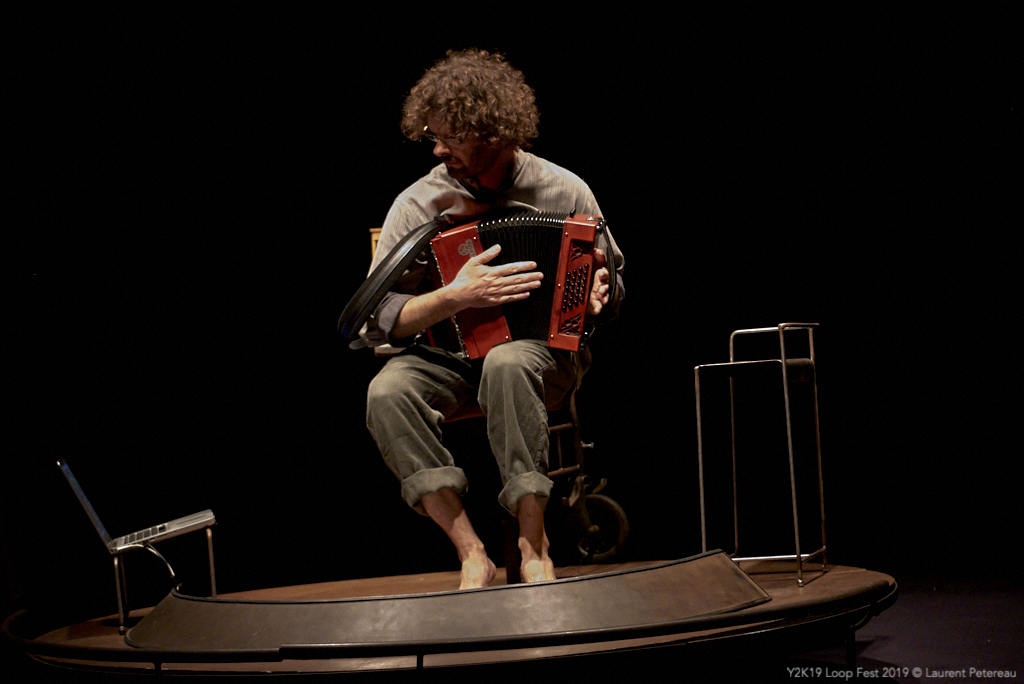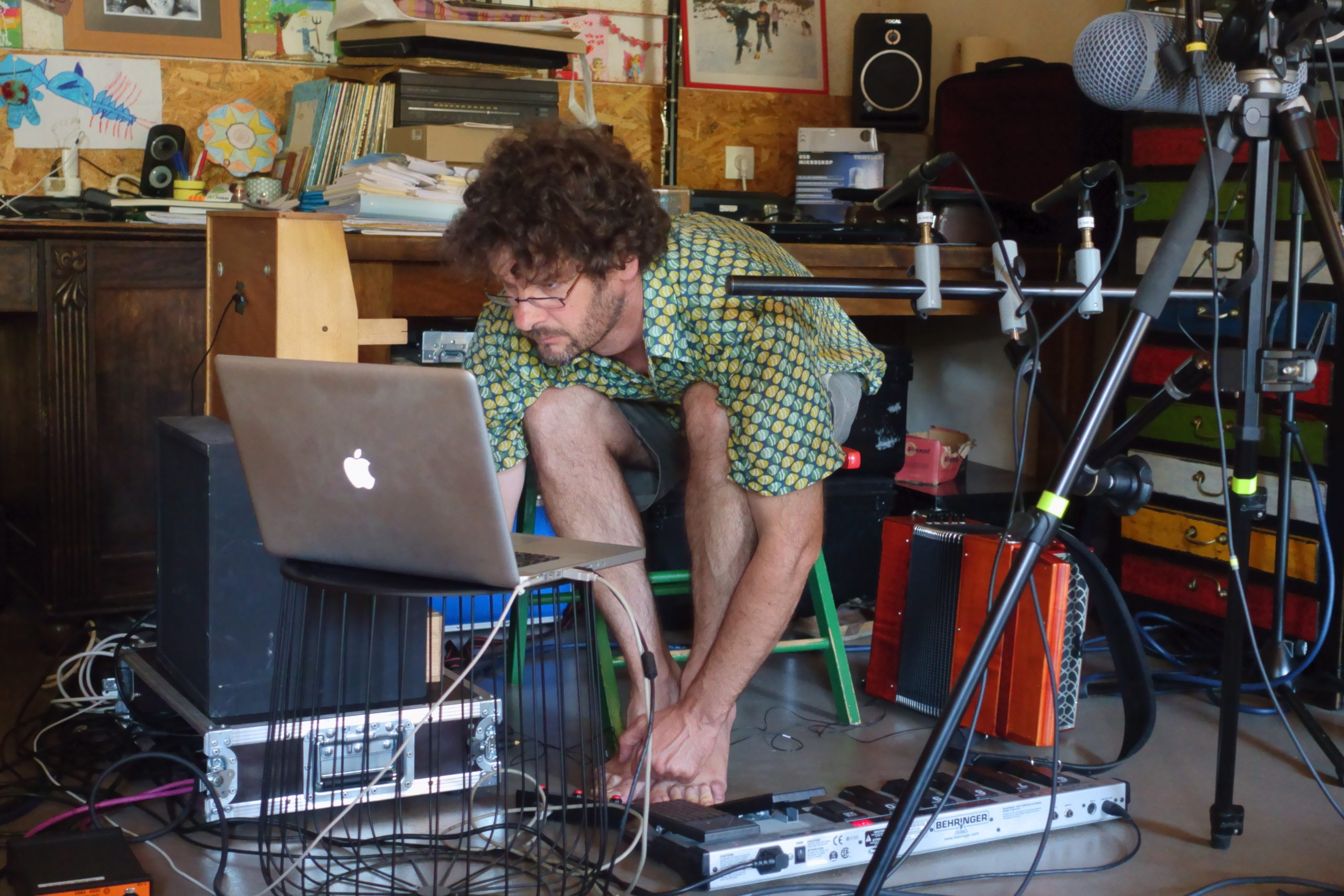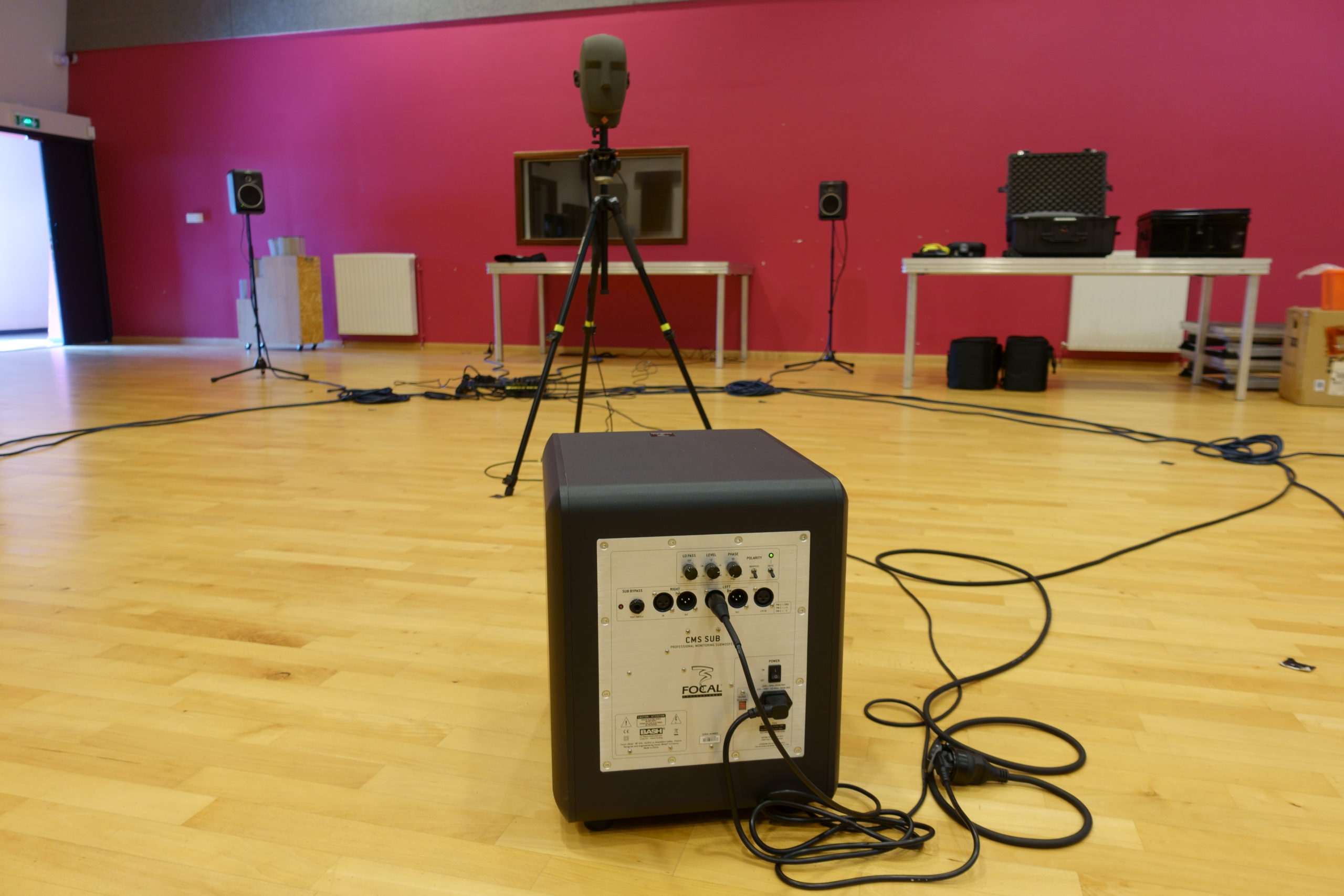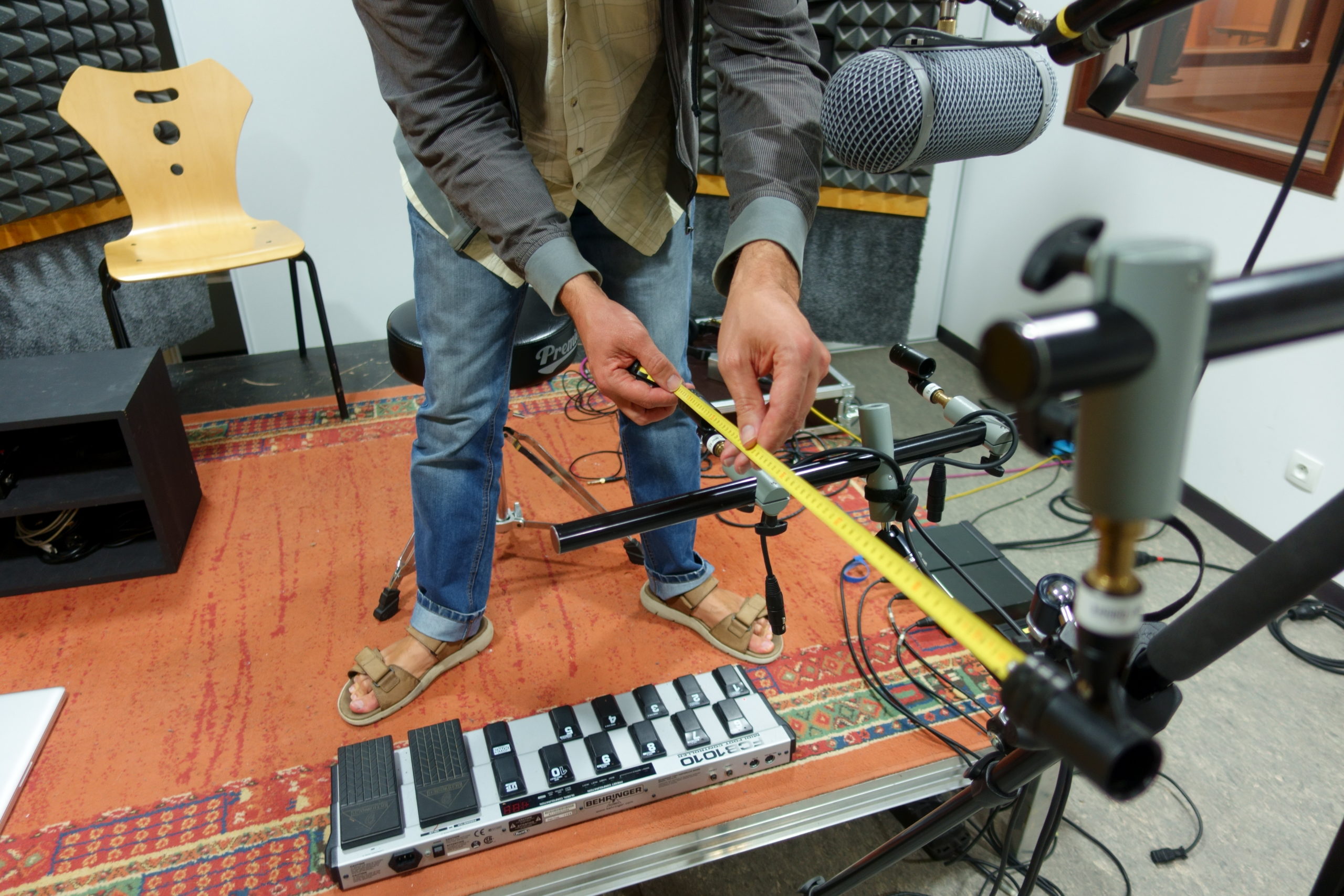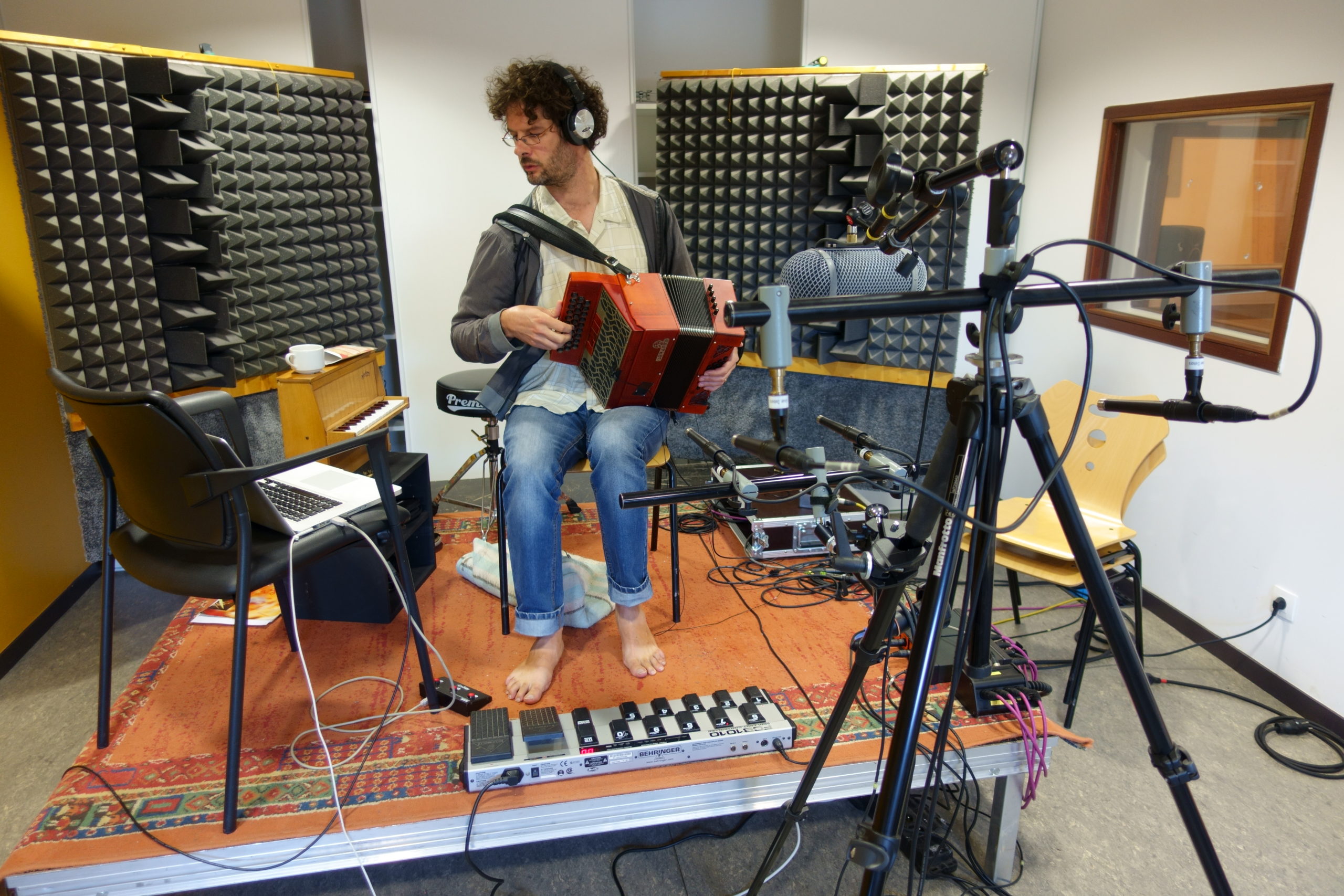Christophe Correc is recording Inside, his immersive music show.
A cocoon
Inside is a set of pieces for diatonic accordion and looper, with a hexaphonic restitution around the audience. But let me turn the floor to Christophe :
Inside is rooted in a strong desire for a sound cocoon. When I play, I’m immersed in the sound of my instrument and I wanted the audience to experience this feeling.
Naturally, I turned to sound spatialization techniques. Each composition of the set takes this relation to the space into account :
– by using live looping, i.e. recording and playing musical loops created and played in real time
– and by spatializing the loops around the audience, Inside being hexaphonic.
The idea of making an album didn’t come early in this creative process, mainly because I was concerned the sound cocoon would be reduced to a two stereo speakers front listening. But the repeated requests led me to consider finding an original solution.
Using binaural
I had become acquainted with binaural at Pascal Rueff’s place, on a performance of the Isle of T., a fond memory, surrounding, scheming, a sort of sound mirage. A spellbinding technique, although most natural, here serving an artistic creation and text quite unique in the sense that I reckon no one can emerge unshaken from such an immersive sound experience.
Once I had made up my mind about recording Inside, I was bound to wish for a binaural version which would enable the listener to enter the cocoon once more, this time through headphones.
But I’m among those who remain attached to CDs. And I wanted to come up with an attractive object. So I suggested we made two versions of the album : a binaural version in audio file form accessible from the web, and a stereo one in the form of a CD. Pascal agreed, I’m still delighted !
Recording
This is where the technical work regarding my live set began (the microphones, the Logelloop software which I use for live-looping and spatialization, the various sound elements I use…), we had to consider where and how to record, in what sequence, adapting the live version of the music to the album version, or not…
It was the first time I recorded in binaural.
We chose to record as if live, meaning myself and the sound system at the same time but in two different rooms so that we could tweak the tracks and mix them freely. At the time, I didn’t quite realize all the requirements it entailed. The need for the highest level of precision with the loops (when live, a musician can put up with and get round whatever flaws there might be), new microphones on the accordion for a better, wider sound on the album but with more details too that could interfere with the creation and further processing of the loops, and lots of other goodies.
We worked at the Startijin Cultural Centre in Pommerit Le Vicomte. The sound system, six speakers and a sub, was set in a large room with a binaural dummy head at the centre of the set-up. As for myself, I got settled in an adjoining room with another binaural dummy head and two pairs of microphones for stereo recording and real-time capturing of the loops.
I enjoyed these working conditions. I found recording in binaural very convenient. I could hear both dummy heads inside my headphones, the sensations were similar to those I have live.
Once the recording systems were adjusted, we took my live set piece by piece and spaced out the speakers playing the loops for the best binaural restitution possible.
We also worked on shifting the sources, be it large circular motions or just a slight movement of the loops. This was carried out using macros in Logelloop. For instance, for certain loops, the sound undulates on either side of the speaker to tempi proportionate to the loop’s length and to arches varying from 5° to 20°. Nasty brain-teaser to execute but which brought the restitution to life.
Post-prod
We recorded in two sessions of three days each, one in August, the other in October 2019. We took advantage of the lockdown in spring 2020 to get started with the mixing, by cloud communication. We had time on our hands and we used it to do this well.
We kicked it off by mixing the binaural recording. Once we were done, we tested our mix on speakers, to see (or rather to hear…) what it sounded like… Would a stereo mix be necessary ?
I submitted these versions to some musician friends of mine. There were some space and timbre distorsions due to the space folding back behind the speakers, but the consensus of opinion was that this could work. Pascal went back to the grind, put the finishing touches to it all and boom !
In the end, we have two binaural mixes : a pure, unaltered one for headphones listening and a second one, equalised for an optimised speaker listening.
While mixing, Pascal and I exchanged a good deal on the concept of dynamics. For me, it’s essential to my playing. I needed this to show on the album. We examined the R128 norm (-23 LUFS) required on the radio and TV but not used at all in music. A compromise had to be reached between a « normal » average level (by normal, I mean the most common volume for a CD) and a wide dynamic range, which is all the more logic since it is highly appreciable in binaural listening.
And here we are, the two versions are ready at the end of June. The album will be launched in November 2020 after a successful crowd-funding campaign.
Find out more about Christophe Correc
Excerpts from the binaural version
